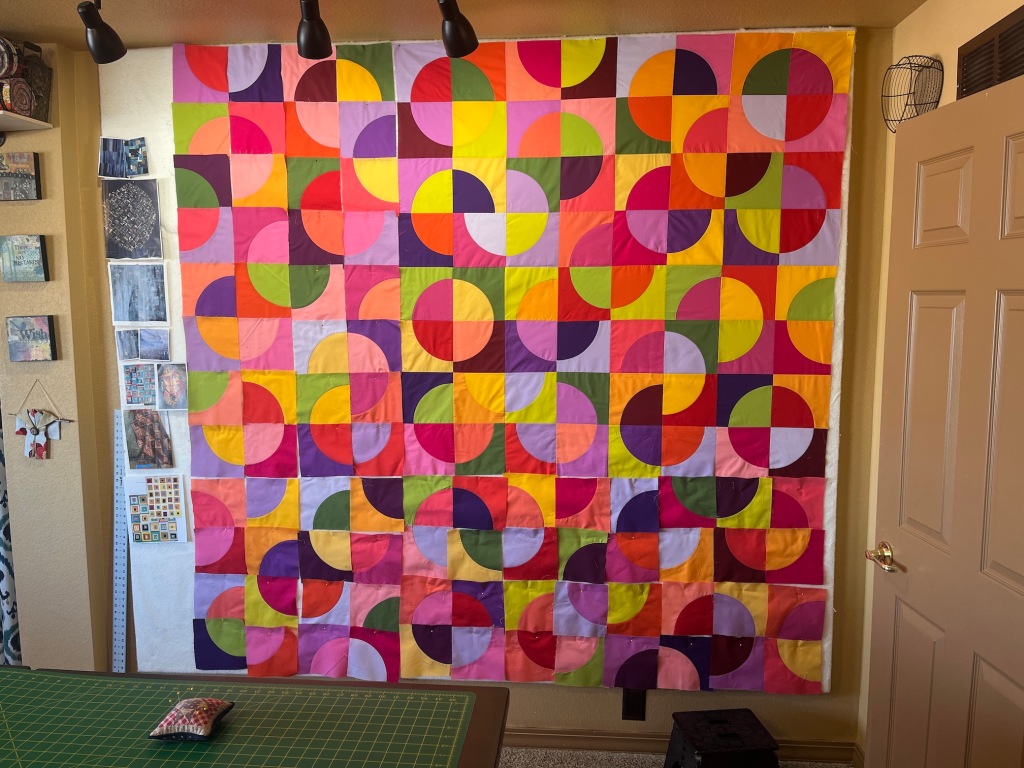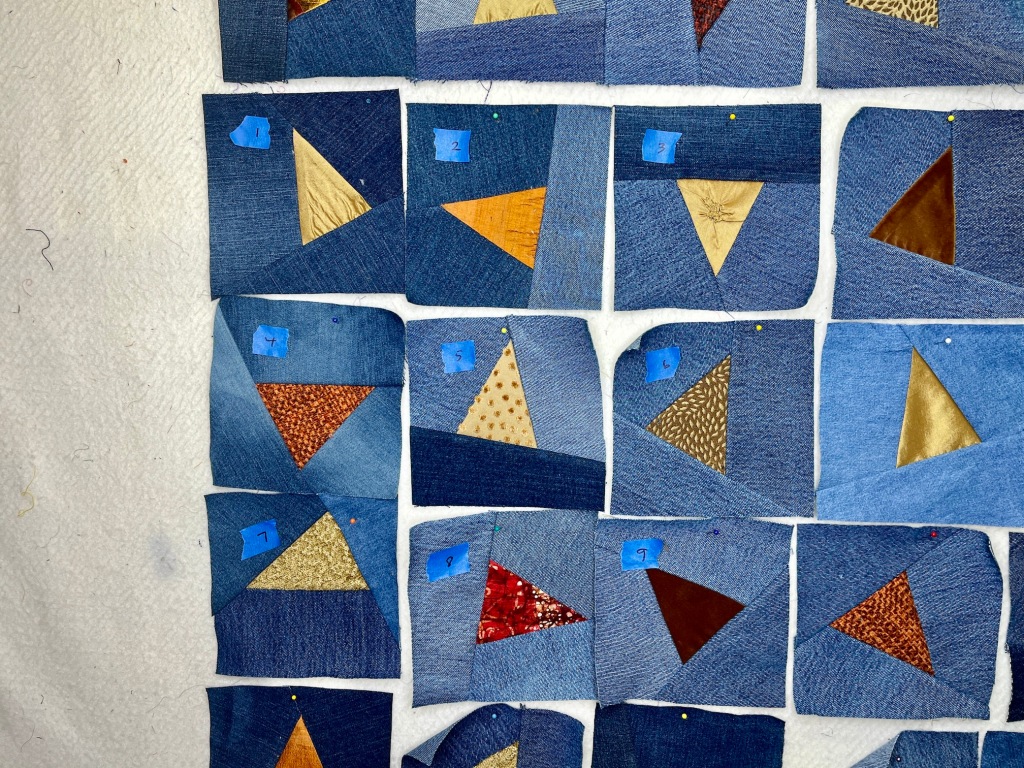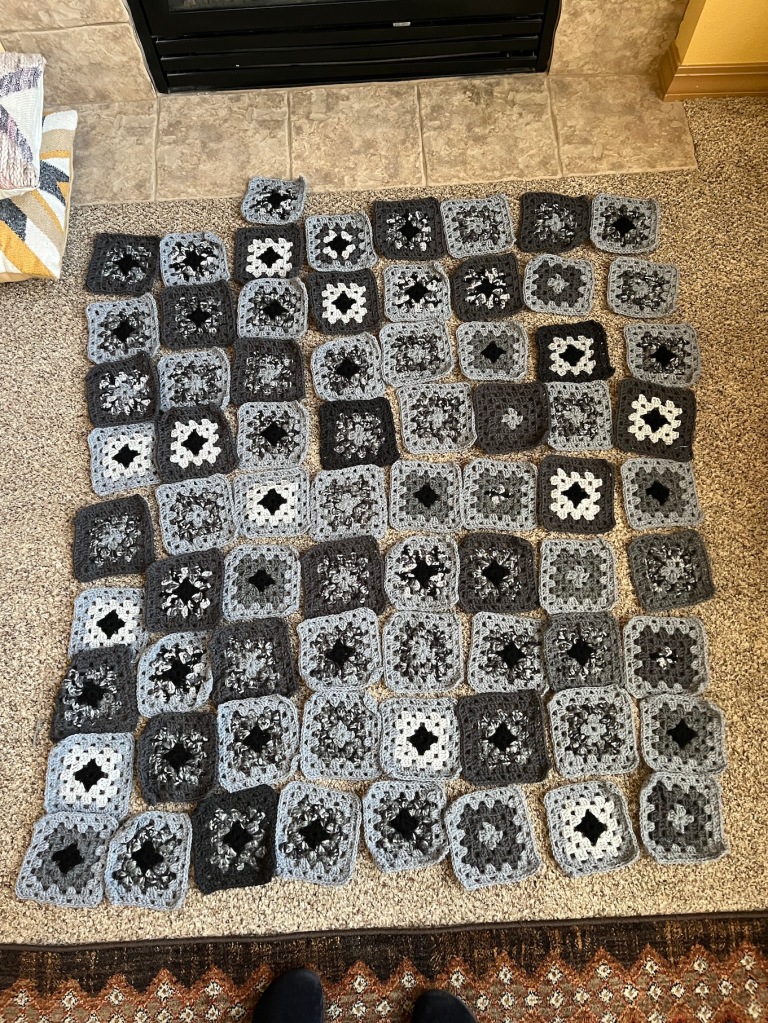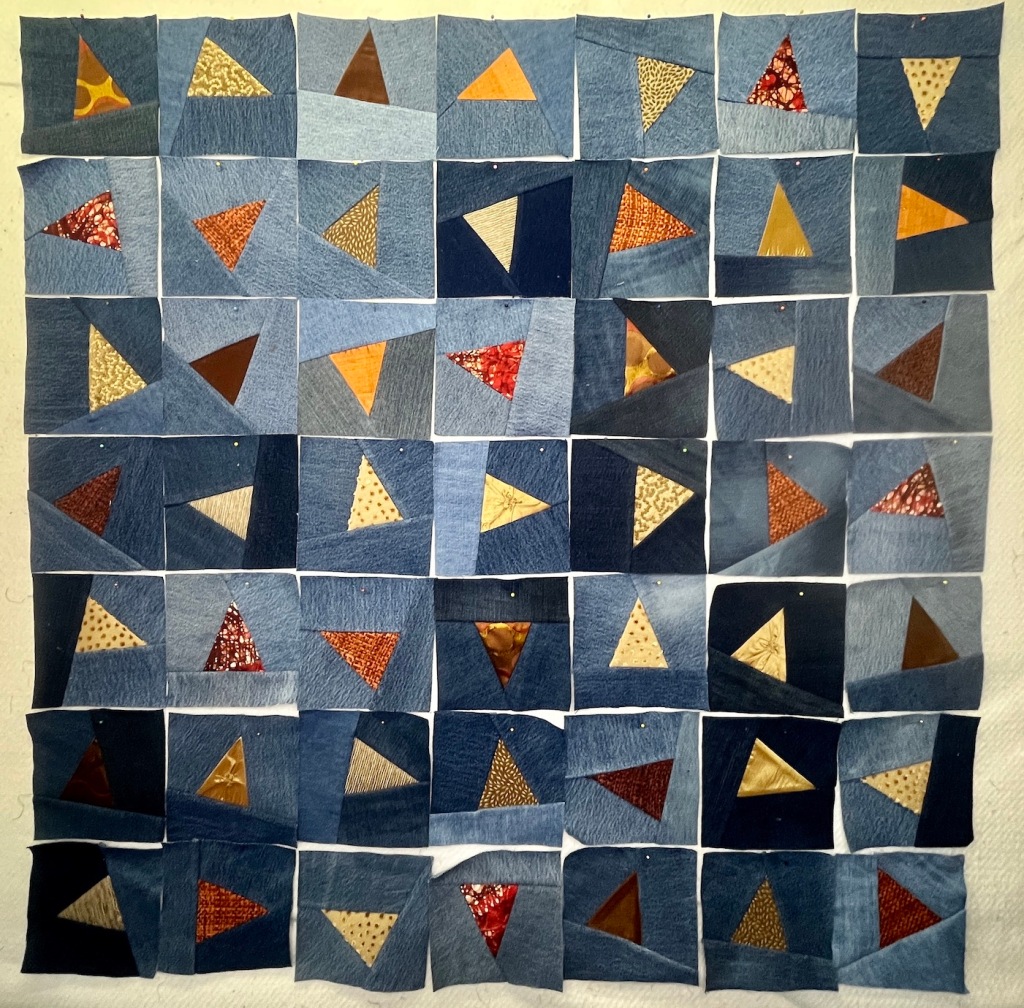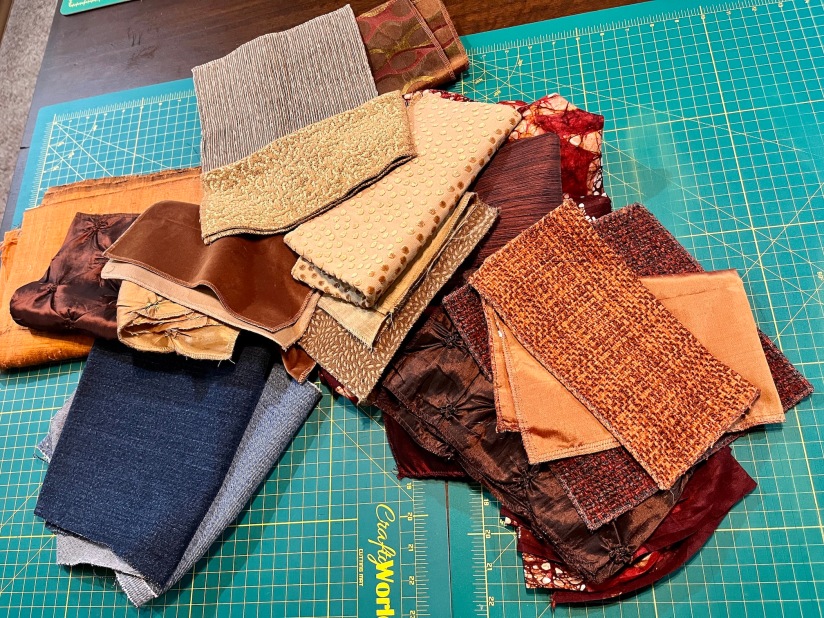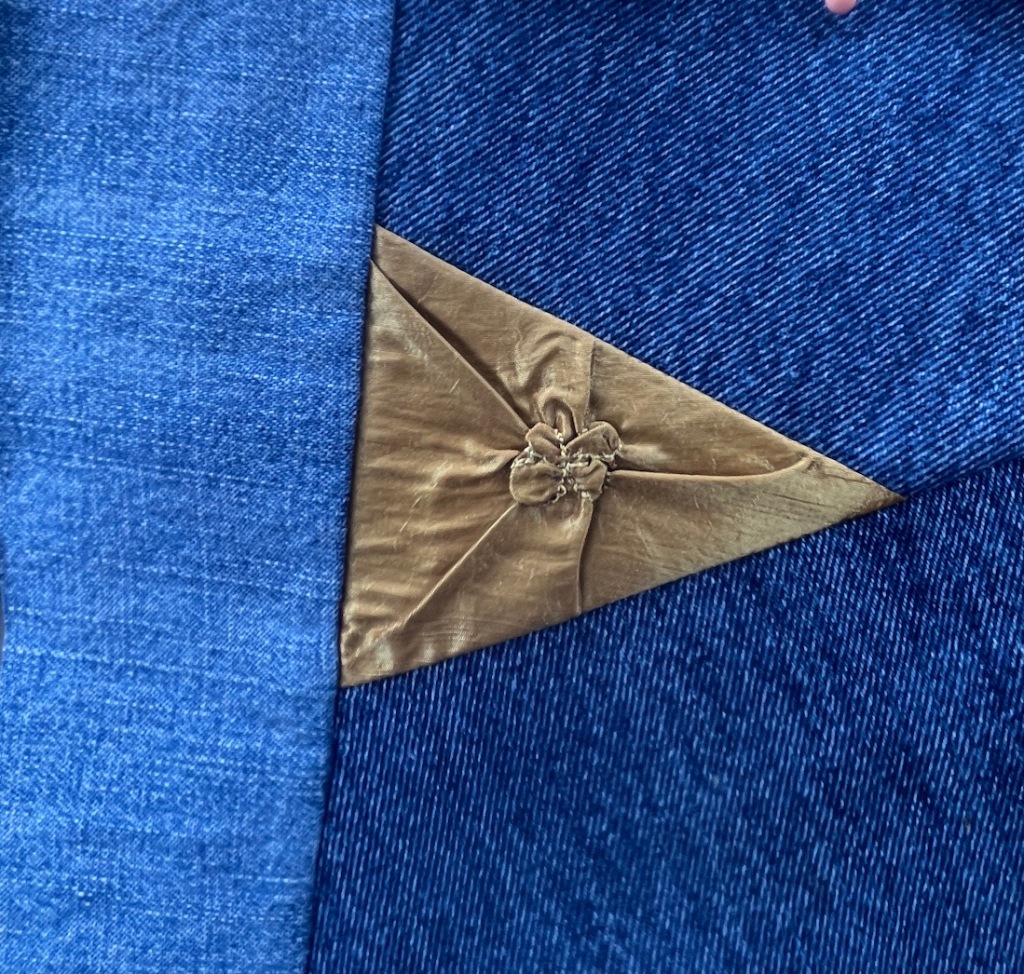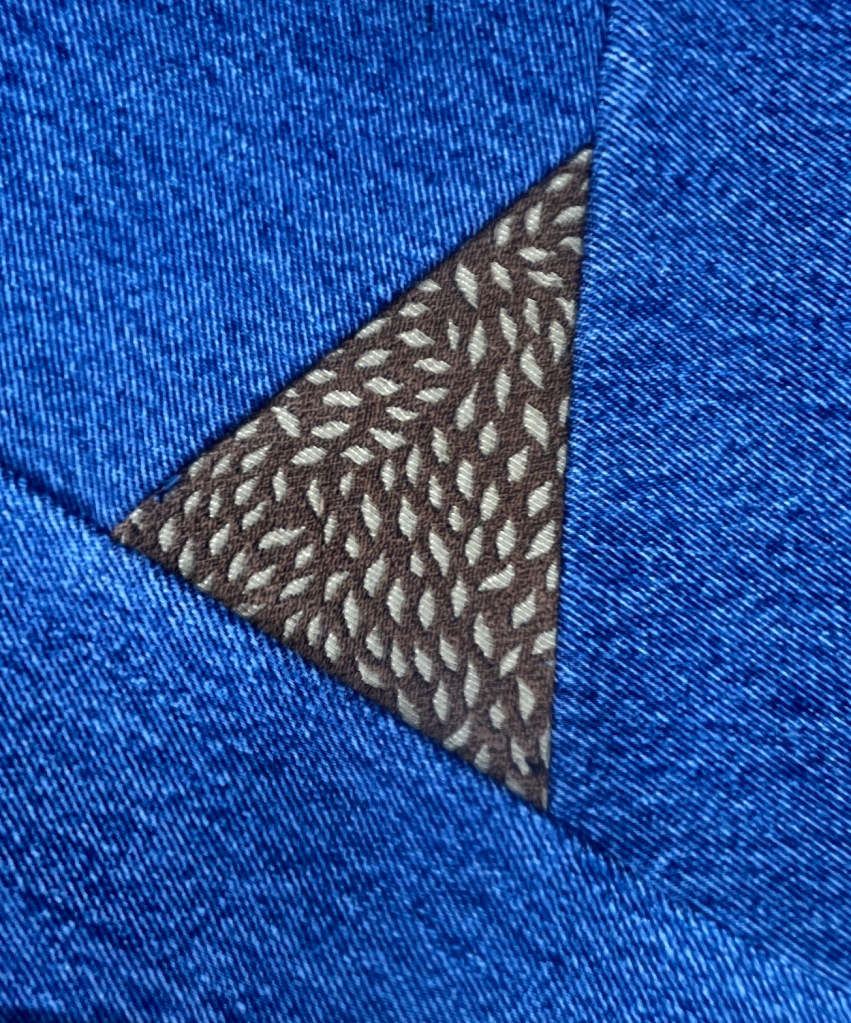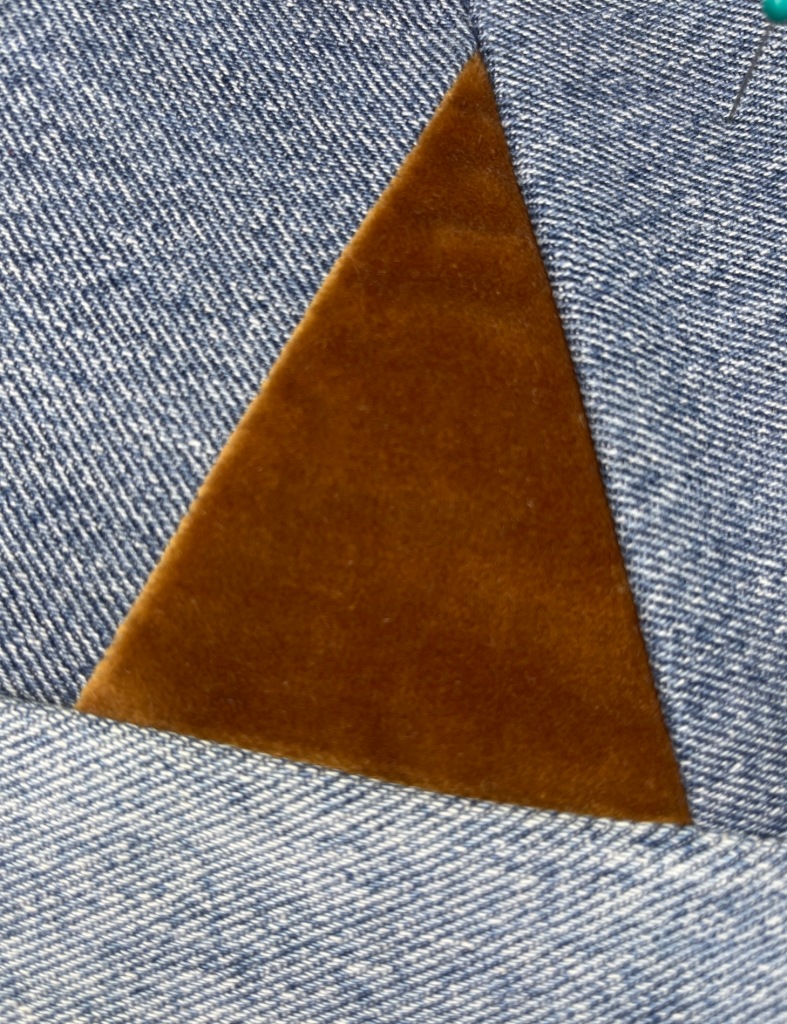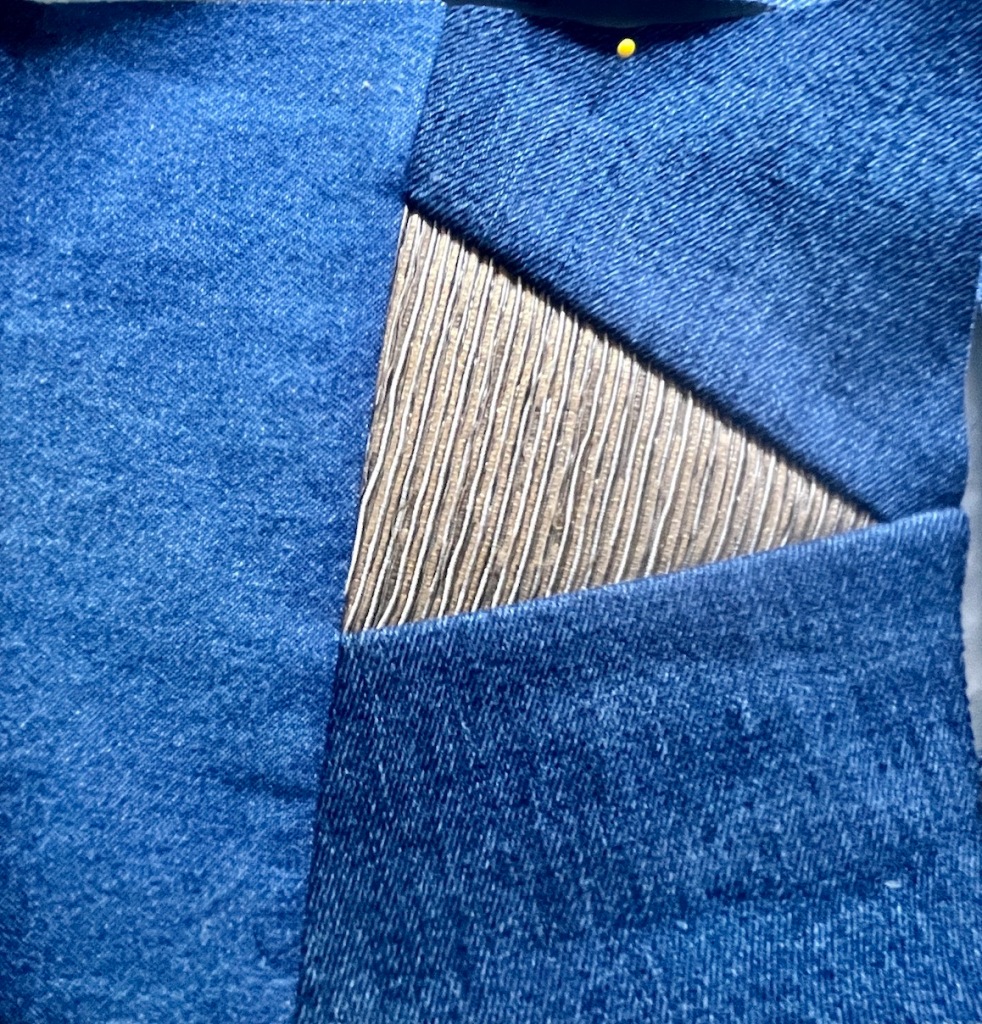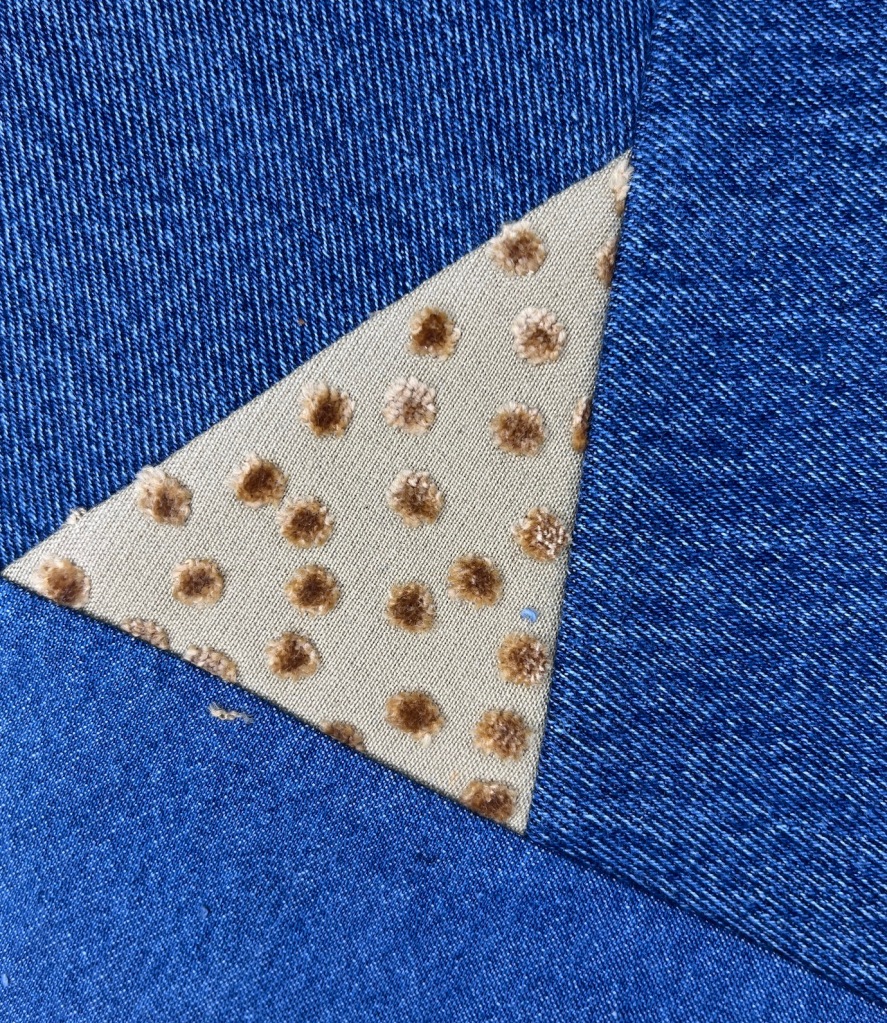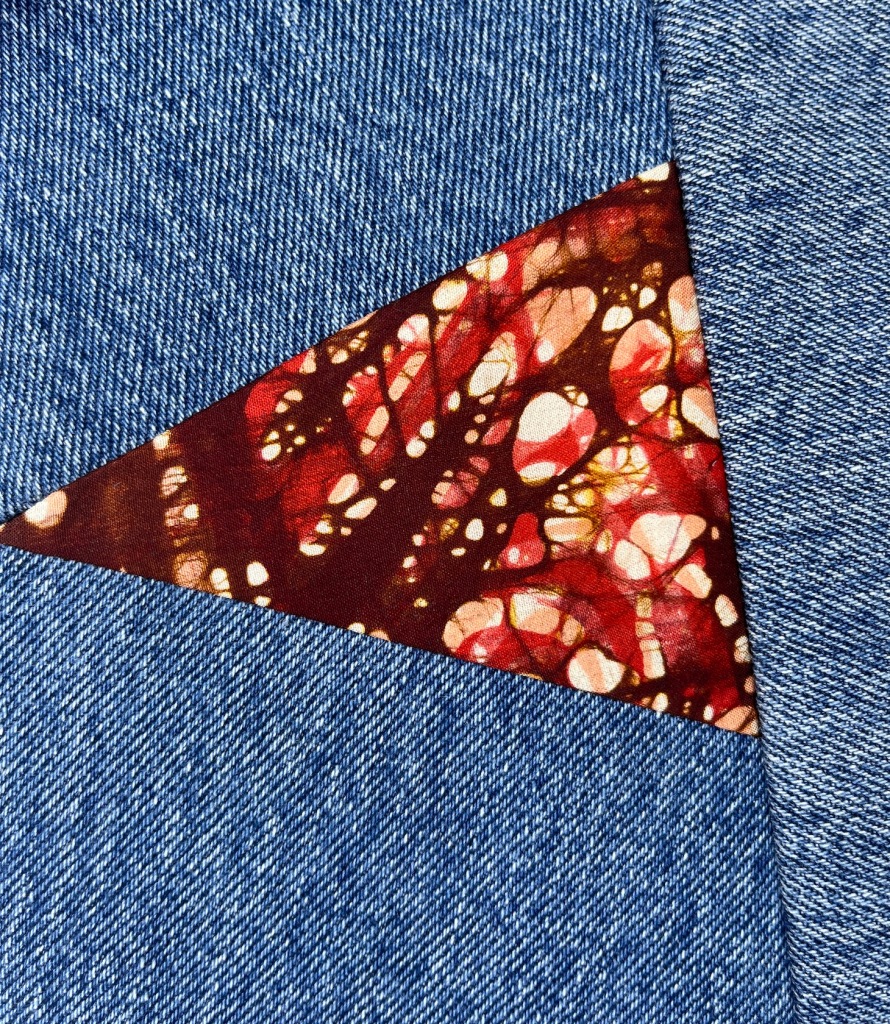Here is a follow up to the post The Expansion of “Go Boldly” , and an update on my progress on this quilt which I expanded from it’s original size of 56 inches by 56 inches (142 x 142 cm) to 82.5 by 82.5 inches (2.1 x 2.1 meters) by adding additional blocks:

I figured since this was the quilt in the background of my photoshoot for the October 2023 Issue 28: Colorado of Quiltfolk Magazine I should go ahead and finish it.

(A little background on this quilt: my friend D started this quilt four years ago and didn’t want to finish it so she offered me the initial pieced blocks, the templates, and the fabric she bought for the project. I’ve pieced about 50% of the blocks for the quilt and the rest were pieced by D.)
So I got all the blocks sewn together and discovered it was nearly Queen bed size when I laid it out on the guest bed:

I had a bit of remaining fabric and some blocks leftover, but I didn’t want to expand the quilt further.

I decided I didn’t need it to be a real Queen sized quilt as I didn’t plan to use it as a bed quilt as the colors do not go with my decor.
I did however want it to be a colorful large lap quilt to have at say the foot of a bed. So I pieced the remaining blocks into circles as the center part of the back of the quilt:

From there I used remaining fabric to build out the quilt back to be a little bit larger than the quilt top:

Yes it is a messy wrinkly mess as I didn’t iron it before I took the photo. This is the back in progress, I added one more row of fabric to each side to make it bigger than the quilt top.
It will basically be a reversible quilt with the pieced back.
I’ve decided to tie the quilt instead of sending it out for professional long arm quilting. I have some cool heavy weight colorful threads I plan to use to tie it. They are close to thickness of embroidery floss.





